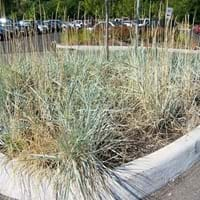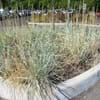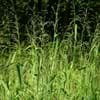Life Span
Perennial
Perennial
Type
Grass
Bulb or Corm or Tuber
Origin
Europe, Northern Europe, Western Europe, Asia, Central Asia, Western Asia
Mediterranean, Turkey
Types
Blue Lyme Grass
Not available
Habitat
Clay soil areas, Loamy soils, Sandy areas, sandy seeps, Well Drained
Lawn, meadows, Sunny Edge, Woodland Garden
USDA Hardiness Zone
4-10
6-9
Sunset Zone
A2, A3, 1a, 1b, 2a, 2b, 3a, 3b, 4, 5, 6, 7, 8, 9, 14, 15, 16, 17, 18, 19, 20, 21, 22, 23, 24
21,22
Habit
Spreading
Clump-Forming
Flower Color
Creamy Yellow
Fuchsia, Rose
Flower Color Modifier
Bicolor
Bicolor
Fruit Color
Not Available
Not Available
Leaf Color in Spring
Blue Green, Steel Blue
Green
Leaf Color in Summer
Light Green
Light Green
Leaf Color in Fall
Light Yellow, Pink, Steel Blue
Several shades of Green
Leaf Color in Winter
Tan
Light Green
Leaf Shape
Grass like
Long Broad
Plant Season
Summer, Fall
Spring, Fall
Sunlight
Full Sun, Partial Sun
Full Sun, Partial Sun
Type of Soil
Clay, Loam, Sand
Loam
The pH of Soil
Acidic, Neutral, Alkaline
Acidic, Neutral
Soil Drainage
Well drained
Well drained
Bloom Time
Summer, Late Summer
Late Summer, Early Fall
Tolerances
Pollution, Drought, Salt
Drought
Where to Plant?
Container, Ground, Pot
Container, Ground, Pot
How to Plant?
Root Division, Rooted stem cutting, Seedlings
Corms or bulbs, Seedlings
Plant Maintenance
Medium
Low
Watering Requirements
Average Water Needs, occasional watering once established
Do Not over Water, Keep the ground moist but not water-logged
In Summer
Lots of watering
Lots of watering
In Spring
Moderate
Moderate
In Winter
Average Water
Average Water
Soil pH
Acidic, Neutral, Alkaline
Acidic, Neutral
Soil Type
Clay, Loam, Sand
Loam
Soil Drainage Capacity
Well drained
Well drained
Sun Exposure
Full Sun, Partial Sun
Full Sun, Partial Sun
Pruning
No pruning needed in the early stages, Prune grass to maintain level, Remove damaged leaves, Remove dead branches, Remove dead leaves
Cut or pinch the stems, Remove damaged leaves, Remove dead flowers, Remove dead leaves
Fertilizers
All-Purpose Liquid Fertilizer, fertilize in spring
All-Purpose Liquid Fertilizer, fertilize in summer
Pests and Diseases
Red blotch
Slugs
Plant Tolerance
Drought, Pollution, Salt
Drought
Flowers
Insignificant
Showy
Flower Petal Number
Single
Single
Foliage Texture
Coarse
Coarse
Foliage Sheen
Matte
Not Available
Attracts
Butterflies
Bees, Butterflies
Allergy
Pollen
poisonous if ingested, Toxic if not prepared properly
Aesthetic Uses
Ground Cover, Landscape Designing
Beautification, Cottage Garden, Showy Purposes
Beauty Benefits
Not Available
Removes pimples
Edible Uses
Insignificant
No
Environmental Uses
Air purification, soil erosion prevension on hill slopes, soil stabilisation
Air purification
Medicinal Uses
Not Available
Arthritis, Gout, Itching
Part of Plant Used
Stem
Bulbs, Flowers, Seeds
Other Uses
Used as Ornamental plant
Used as Ornamental plant, Used for its medicinal properties
Used As Indoor Plant
No
No
Used As Outdoor Plant
Yes
Yes
Garden Design
Mixed Border
Alpine, Container, Mixed Border, Rock Garden / Wall
Botanical Name
LEYMUS arenarius 'Blue Dune'
Colchicum autumnale
Common Name
Blue Dune Lyme Grass, Sand Ryegrass
Autumn Crocus, meadow saffron, naked lady
In Hindi
Blue Dune Lyme Grass
शरद ऋतु का पौधा
In German
Blau Dune Lyme Grass
Herbstzeitlose
In French
Bleu Dune Lyme Herbe
colchique d'automne
In Spanish
Azul Duna hierba de Lyme
cólquico
In Greek
Μπλε Dune Lyme Grass
φθινόπωρο κρόκος
In Portuguese
Azul Dune Lyme grama
aftomn gema
In Polish
Niebieska Trawa Dune z Lyme
aftomn żółtka
In Latin
Blue Dune Lyme Grass
aftomn vitellus
Phylum
Magnoliophyta
Magnoliophyta
Class
Liliopsida
Liliopsida
Clade
Angiosperms, Commelinids, Monocots
Angiosperms, Monocots
Tribe
Triticeae
Colchiceae
Subfamily
Pooideae
Not Available
Number of Species
Not Available
Season and Care of Blue Dune Lyme Grass and Autumn Crocus
Season and care of Blue Dune Lyme Grass and Autumn Crocus is important to know. While considering everything about Blue Dune Lyme Grass and Autumn Crocus Care, growing season is an essential factor. Blue Dune Lyme Grass season is Summer and Fall and Autumn Crocus season is Summer and Fall. The type of soil for Blue Dune Lyme Grass is Clay, Loam, Sand and for Autumn Crocus is Loam while the PH of soil for Blue Dune Lyme Grass is Acidic, Neutral, Alkaline and for Autumn Crocus is Acidic, Neutral.
Blue Dune Lyme Grass and Autumn Crocus Physical Information
Blue Dune Lyme Grass and Autumn Crocus physical information is very important for comparison. Blue Dune Lyme Grass height is 150.00 cm and width 75.00 cm whereas Autumn Crocus height is 7.60 cm and width 7.60 cm. The color specification of Blue Dune Lyme Grass and Autumn Crocus are as follows:
Blue Dune Lyme Grass flower color: Creamy Yellow
Blue Dune Lyme Grass leaf color: Blue Green and Steel Blue
Autumn Crocus flower color: Fuchsia and Rose
- Autumn Crocus leaf color: Green
Care of Blue Dune Lyme Grass and Autumn Crocus
Care of Blue Dune Lyme Grass and Autumn Crocus include pruning, fertilizers, watering etc. Blue Dune Lyme Grass pruning is done No pruning needed in the early stages, Prune grass to maintain level, Remove damaged leaves, Remove dead branches and Remove dead leaves and Autumn Crocus pruning is done Cut or pinch the stems, Remove damaged leaves, Remove dead flowers and Remove dead leaves. In summer Blue Dune Lyme Grass needs Lots of watering and in winter, it needs Average Water. Whereas, in summer Autumn Crocus needs Lots of watering and in winter, it needs Average Water.





